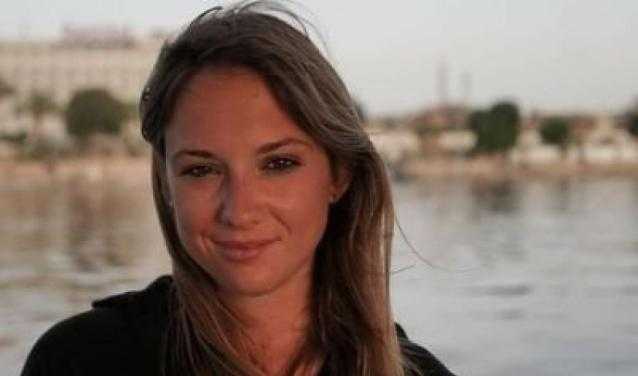Home>Coline Renault Takes Us Behind the Scenes of Her Award-Winning Photojournalism Story

08.12.2021
Coline Renault Takes Us Behind the Scenes of Her Award-Winning Photojournalism Story
Coline Renault, graduate of Sciences Po’s Journalism School, won the People’s Choice award for Paris Match’s Student Photojournalism contest for her photojournalism story À Étretat, la beauté à tâtons. From a pool of nearly 50,000 participants, only 5 were awarded prizes in 2021.
Coline Renault goes into detail about her photography techniques, her vision of the medium, and about journalism as a whole, while also providing some key pieces of advice for up-and-coming journalists. All this and more in the following interview:
What got you interested in photography? Do you remember your first photography project?
Coline Renault: I started taking lots of photos during my third year abroad in Montreal. I was gifted a camera as a goodbye present, so I began shooting photo after photo, following my instincts at first, then, little by litte, taking an interest in composition and technique. During that year, I attended the Inauguration of Donald Trump in January of 2017 and photographed Trump supporters facing off with women from the Women’s March, which had drawn hundreds of thousands of people to Washington on January 21st, 2017. After that, I set sail onboard a drawler on the Île d'Yeu for a photojournalism story on the island’s last fishermen—my first real photojournalism story.
What role did Sciences Po play in your career path?
CR: I began my time at Sciences Po with the ambition of becoming a journalist. I was able to do internships as an undergrad, try my hand at photojournalism during my third year studying abroad—where I also worked for a radio station in Quebec—before joining Sciences Po’s Journalism School, where we are considered full-fledged journalists starting on the very first day. During the Master’s program, I was able to do multiple internships—one of which was with the documentary production company Babel Press in New Delhi, and the other two, which were at the Figaro, where I now work. By making all of these opportunities possible, Sciences Po paves the way for a career in journalism!
Your photojournalism project on Christophe Leboucher À Étretat, la beauté à tâtons recently won the people’s choice award for Paris Match’s Student Photojournalism contest. How did you come to this subject matter?
CR: For a while now, I’ve been trying to specialise in subjects relating to maritime issues and looking for evocative figures from that world. Of course, there was the subject's aesthetic component which was linked to Étretat itself, but also a sensory component related to the blind fisherman’s interaction with nature, which struck me as a very poetic and interesting story to tell.
How did you meet Christophe Leboucher? What were your first impressions when you met him?
CR: I contacted Christophe by calling various organisations in Étretat to get his number. He invited me to his house before our first fishing trip. I found him extremely kind and warm, happy to share his passion and his cliffs with anyone who isn’t afraid to dive in and get their feet wet (literally!).
In your project, you mentioned the documentary Crab Season (La saison des Tourteaux). Did it influence how you approached your photojournalism?
CR: I watched the documentary long before photographing the story, and I made the choice of not watching it again so that it wouldn’t influence my approach to the subject matter. However, I met the director, Martin Benoist, with whom I had been in contact for a longtime concerning Christophe and how to treat the subject matter with respect without "stealing" his work from him. This is why I quoted the film and included Martin’s quotes in the textual description accompanying my photojournalism project.
Do you plan your photos in advance or do they come to you in the moment?
CR: I plan sequences beforehand. For example, I know that I’ll need images of him at home, getting ready, on the way to the beach, with his friends, during the fishing process… But I don’t have a defined idea of what the image is going to look like. I decide that instinctively in the moment, based on the lighting, the composition…
What about photojournalism made you choose this medium to treat the subject matter ?
CR: Photography allows you to suspend the moment. Which is topical, since Christophe’s way of fishing through touch has an extraordinary feeling of being outside of time. I also produced a written version of this story, which can be told quite well with words.
The People’s Choice award comes with a 1,000€ prize. What do you plan to do with your winnings?
CR: I bought myself a new lens: a wide-angle lens for landscapes. And with the rest, I’m going on vacation!
You are currently a journalist for the Figaro, where you work in the editorial department. What advice do you have for up-and-coming journalists?
CR: Produce, produce, produce: reporting, writing, photography, radio, videos. You become a journalist by learning to tell stories, and it’s important to start producing as much as possible right away, in the context of an internship or a personal project. Everything will be useful when you start looking for a job!
The Sciences Po Editorial Team
Find out more
- Discover Sciences Po’s Journalism School